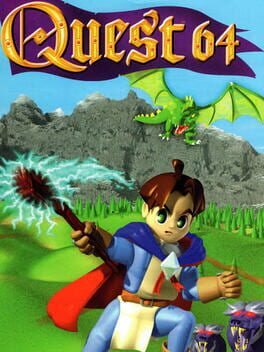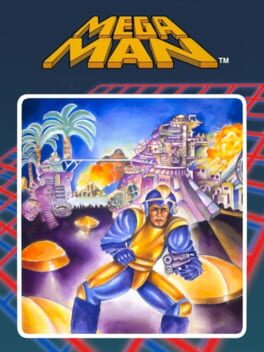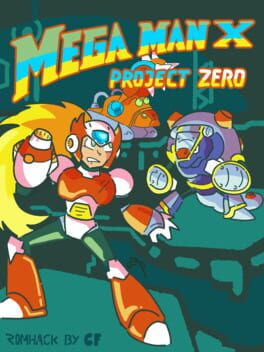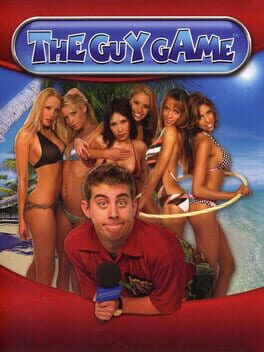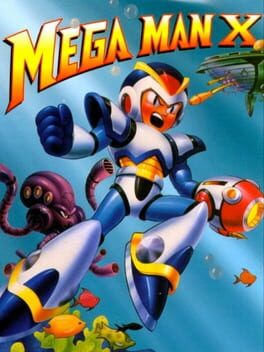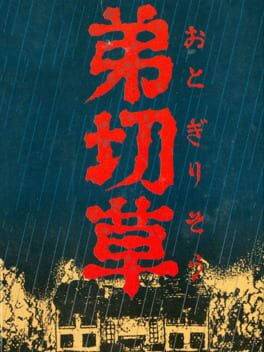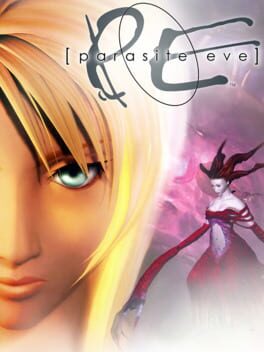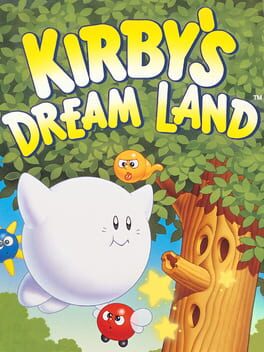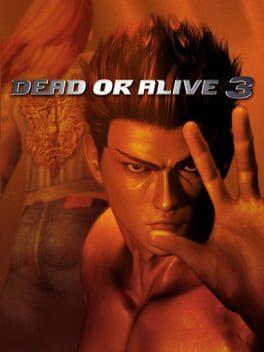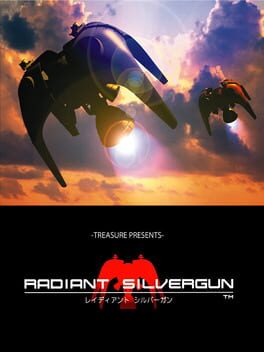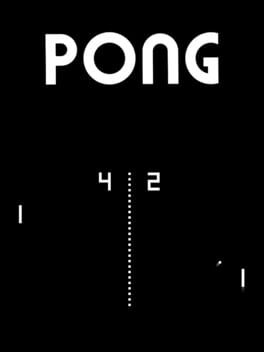1998
1995
1987
The more I practice speedrunning this game, the more confidently I can call it my favourite in the original Mega Man series.
The simple and humble nature of this entry makes for a fantastic purity that (while perhaps not always intentionally) feels quite free and allows for tremendous player expression. Due to the lack of E-tanks, not to mention I-frames not serving as a crutch mechanic against spikes, everything must be approached with skill and tactics alone. Take for example the Copy Robot fight. Should players slowly pelt it with bombs for a safe strategy, swap between the buster and Guts Man's weapon to render it helpless, or go all out with the fire to quickly kill it?
What of the pillars in Fire Man's stage? Should they be skipped with the Magnet Beam, frozen with ice, or patiently jumped past? Or the platforms in Guts Man's stage? Should the player learn how to leap across them, or fight Elec Man twice to destroy the guts blocks with his beam? The concept of revisiting stages for items would not be revisited until Mega Man 4, and boy did I have fond memories of experimenting with every weapon so heavily with this game.
In fact, I still have so much fun experimenting with different ways to tackle enemies. Maybe I'll freeze the Big Eyes and rapid blast them with the Buster, or maybe I'll use the magnet beam to lure them into the pits in Elec Man's stage. Every weapon in the game feels overpowered in the right circumstances. While later MM games feature more weapons, the limited amount of robot masters meant the limited amount of weapons here needed to have more than one purpose, thus the shield bundled with Fire Man's shot or the multi-directional nature of the Elec Beam. It's something I greatly prefer to only a couple weapons being worthwhile, such is the case with the metal blade mostly making the other weapons in MM2 redundant.
Of course, I can't forget the atmosphere either. The almost cheerful nature of Bomb Man's theme mixed with an underlying melancholy is permanently engraved in my mind, heavily mirroring my feelings of excitement to explore such a colourful futuristic world despite it being in the back of my mind I was unfortunately forced to face my own robot brothers. The battle against Yellow Devil also sounds like a descent into hell as I do my best over countless attempts to finally learn its pattern.
Sure, the game isn't perfect; I really wish Ice Man's level had water physics from later entries and the RNG platforms didn't suck, but something about reaching my destination always makes me feel complete. Seeing the hero I played as the entire time was a kid with his own family to return to, it truly awoke feelings of motivation in my silly child self.
FIGHT, MEGAMAN!
FOR EVERLASTING PEACE!
The simple and humble nature of this entry makes for a fantastic purity that (while perhaps not always intentionally) feels quite free and allows for tremendous player expression. Due to the lack of E-tanks, not to mention I-frames not serving as a crutch mechanic against spikes, everything must be approached with skill and tactics alone. Take for example the Copy Robot fight. Should players slowly pelt it with bombs for a safe strategy, swap between the buster and Guts Man's weapon to render it helpless, or go all out with the fire to quickly kill it?
What of the pillars in Fire Man's stage? Should they be skipped with the Magnet Beam, frozen with ice, or patiently jumped past? Or the platforms in Guts Man's stage? Should the player learn how to leap across them, or fight Elec Man twice to destroy the guts blocks with his beam? The concept of revisiting stages for items would not be revisited until Mega Man 4, and boy did I have fond memories of experimenting with every weapon so heavily with this game.
In fact, I still have so much fun experimenting with different ways to tackle enemies. Maybe I'll freeze the Big Eyes and rapid blast them with the Buster, or maybe I'll use the magnet beam to lure them into the pits in Elec Man's stage. Every weapon in the game feels overpowered in the right circumstances. While later MM games feature more weapons, the limited amount of robot masters meant the limited amount of weapons here needed to have more than one purpose, thus the shield bundled with Fire Man's shot or the multi-directional nature of the Elec Beam. It's something I greatly prefer to only a couple weapons being worthwhile, such is the case with the metal blade mostly making the other weapons in MM2 redundant.
Of course, I can't forget the atmosphere either. The almost cheerful nature of Bomb Man's theme mixed with an underlying melancholy is permanently engraved in my mind, heavily mirroring my feelings of excitement to explore such a colourful futuristic world despite it being in the back of my mind I was unfortunately forced to face my own robot brothers. The battle against Yellow Devil also sounds like a descent into hell as I do my best over countless attempts to finally learn its pattern.
Sure, the game isn't perfect; I really wish Ice Man's level had water physics from later entries and the RNG platforms didn't suck, but something about reaching my destination always makes me feel complete. Seeing the hero I played as the entire time was a kid with his own family to return to, it truly awoke feelings of motivation in my silly child self.
FIGHT, MEGAMAN!
FOR EVERLASTING PEACE!
This is a total ROM conversion for the original Mega Man X which can be downloaded here: https://www.romhacking.net/hacks/8167/
I have been working off and on with this project for a couple years now. It's no secret my favourite character has always been Zero from the Mega Man series. The way he has always been eager to lend a helping hand to X and his comrades. How he would continuously save the world against overwhelming odds. That his life followed such a complicated trajectory across multiple sub-series' but he consistently tried to be a force for good despite his background, being made by the evil Wily for world domination. As a young child, he was an inspiration to me. So naturally my mind was blown the instant I discovered he was playable in X3. Doubly so when I discovered the Zero Project for X3.
The original Mega Man X is my most played game ever. For a while it seemed like every revisit, I learned something new about the game; be it the stages changing depending on the boss order tackled, or the enemies losing their body parts when hit with certain weapons.
This is why I wished for a world where this game could feel fresh to me again. After being wowed by the X3 Zero Project, I felt a rush of excitement to try my hand fully incorporating Zero into the world of X1, so I got to work. Over 2 years or so, I was faced with numerous self-doubts.
"I'll never be smart enough to edit the text."
"These files are in bin format? I can't open these with PowerISO, what can I do then?!"
"I'll never figure out how to change the music!"
"I wish I could change the 1up icon...."
I'm here to tell you that if you want to achieve something hard enough, you CAN get it done. Your biggest enemy is yourself, and everybody is their own worst critic. Creating this hack was a long journey and I learned so much about so many things that go into game creation, particularly the retro classics.
Assembly language coding. Music sheets. Which objects are transparent VS opaque. Pallet swapping. Health and ammunition variables. Scripting and font colours. It simply goes on and on.
To all those who love Mega Man as I do, I hope this hack is something universally enjoyable. I much prefer to spread my love for things I am passionate about than to focus on the negativity, which is why I went above and beyond to put this together. That the levels, stages, cutscenes, music, physics, graphics, and so forth can have so many significant changes to make the world truly feel like a what-if alternate universe where Zero was the main character, rather than some mere character swap. The overall aim was to have a game that was somewhat harder than the original Mega Man X, but still make Zero feel powerful and different enough that his campaign wasn't just X's campaign but harder.
And of course, I have to give a huge shoutout to everybody over the years who helped this project come into fruition. Xeeynamo for creating a level editor. xstuff for helping me with graphical and music edits. denim for compression and decompression programs. GoldS and Power Panda for disassembly files that gave me a great headstart. Falchion 22 and Peru for initial hacking elements I mixed and matched. cerberus-rack, brongaa12, Kensuyjin33, and fallensoldier420 for graphical work relevant to Zero’s canon design. Umiliphus for graphical work relevant to Dr. Wily’s sprite. Maël Hörz for HxD, the greatest hex editor I have ever used. And of course, Vis for the amazing cover art I submitted to IGDB. https://twitter.com/PD_CGT_games/status/1718036539622531354?s=20
I truly believe working with so many people to learn romhacking skills in the past couple years and gaining so many new perspectives around the hobby has not only made me a better coder, but also a better person. I thank everyone who helped push my dream of a fully integrated Zero in MMX1's world to reality.
"Sigma, you should have studied the blueprints closer! There is only one Zero!"
I have been working off and on with this project for a couple years now. It's no secret my favourite character has always been Zero from the Mega Man series. The way he has always been eager to lend a helping hand to X and his comrades. How he would continuously save the world against overwhelming odds. That his life followed such a complicated trajectory across multiple sub-series' but he consistently tried to be a force for good despite his background, being made by the evil Wily for world domination. As a young child, he was an inspiration to me. So naturally my mind was blown the instant I discovered he was playable in X3. Doubly so when I discovered the Zero Project for X3.
The original Mega Man X is my most played game ever. For a while it seemed like every revisit, I learned something new about the game; be it the stages changing depending on the boss order tackled, or the enemies losing their body parts when hit with certain weapons.
This is why I wished for a world where this game could feel fresh to me again. After being wowed by the X3 Zero Project, I felt a rush of excitement to try my hand fully incorporating Zero into the world of X1, so I got to work. Over 2 years or so, I was faced with numerous self-doubts.
"I'll never be smart enough to edit the text."
"These files are in bin format? I can't open these with PowerISO, what can I do then?!"
"I'll never figure out how to change the music!"
"I wish I could change the 1up icon...."
I'm here to tell you that if you want to achieve something hard enough, you CAN get it done. Your biggest enemy is yourself, and everybody is their own worst critic. Creating this hack was a long journey and I learned so much about so many things that go into game creation, particularly the retro classics.
Assembly language coding. Music sheets. Which objects are transparent VS opaque. Pallet swapping. Health and ammunition variables. Scripting and font colours. It simply goes on and on.
To all those who love Mega Man as I do, I hope this hack is something universally enjoyable. I much prefer to spread my love for things I am passionate about than to focus on the negativity, which is why I went above and beyond to put this together. That the levels, stages, cutscenes, music, physics, graphics, and so forth can have so many significant changes to make the world truly feel like a what-if alternate universe where Zero was the main character, rather than some mere character swap. The overall aim was to have a game that was somewhat harder than the original Mega Man X, but still make Zero feel powerful and different enough that his campaign wasn't just X's campaign but harder.
And of course, I have to give a huge shoutout to everybody over the years who helped this project come into fruition. Xeeynamo for creating a level editor. xstuff for helping me with graphical and music edits. denim for compression and decompression programs. GoldS and Power Panda for disassembly files that gave me a great headstart. Falchion 22 and Peru for initial hacking elements I mixed and matched. cerberus-rack, brongaa12, Kensuyjin33, and fallensoldier420 for graphical work relevant to Zero’s canon design. Umiliphus for graphical work relevant to Dr. Wily’s sprite. Maël Hörz for HxD, the greatest hex editor I have ever used. And of course, Vis for the amazing cover art I submitted to IGDB. https://twitter.com/PD_CGT_games/status/1718036539622531354?s=20
I truly believe working with so many people to learn romhacking skills in the past couple years and gaining so many new perspectives around the hobby has not only made me a better coder, but also a better person. I thank everyone who helped push my dream of a fully integrated Zero in MMX1's world to reality.
"Sigma, you should have studied the blueprints closer! There is only one Zero!"
1998
2004
1993
"X is a variable. It represents limitless potential."
https://www.youtube.com/watch?v=qRa7F1GyoMI
On this date, 1993, Mega Man X was released in Japan. In every sense of the word, it was a game about evolution. The tone maturing as the audience of the classic series had grown, the gameplay loop revolving around obtaining upgrades to make the rest of the game more manageable (best emphasized with maverick rematches) and the sheer jump in terms of mechanical complexity and scale compared to the classic series all drive this point home perfectly.
https://i.kym-cdn.com/photos/images/newsfeed/001/919/301/6e5
Making an entirely new spin-off series with a darker and only vaguely familiar world, where the existence of the Mega Man we once knew is all but apocyrphal, was an enormous risk for Capcom. Yet with the series' sales declining to the point Nintendo had to publish MM6 in Capcom's place after the Nintendo Power contest was already held, it was perhaps the only move that could save the franchise.
The potential for new ideas was limitless, so much so Zero was nearly the main character instead of X. I'll start by talking about the mechanics, because the gameplay is by far the most interesting part of the experience.
https://pa1.narvii.com/7472/02f28f3638ae7d7aa771824791fc8f04fb590354r1-500-400_hq.gif
In the classic Mega Man series, the player would need to rely on tools such as Rush's henshins to progress through Wily castles. This hindered level design in the robot master stages as there was no guarantee the player would receive them. In Mega Man X, the player is immediately granted one simple move to flip the world on its head and that is the wall jump. On paper, it's a simple novelty. In practice, it allowed the world to expand to heights rarely if ever seen in an action-platformer. Every stage would have added verticality complete with upgrades such as heart tanks, armour pieces, and sub-tanks.
Many have argued the lack of dash boots in the intro makes it slow-paced, but I would argue starting the player at a speed closer to classic Mega Man's before forcing them to learn the dash does a perfect job of making the player feel stronger in an instant and bring the game on a whole new level all over again as it allows for even more exploration potential. Allowing the dash and wall jump to then be combined into the super wall jump made it feel like the character was naturally evolving to create new techniques, rather than just picking up a power-up that allowed the player to press a new button and leave it at that.
https://i.pinimg.com/originals/a7/01/f9/a701f9c5ce830a138b114923d6fd800b.gif
The world simply feels lived and polished. When X runs low on health in Chill Penguin's stage, he starts to breathe heavily as always but now frosty breath emits from him, a subtle touch regarding how humanlike he is compared to classic robot masters. Rather than just reuse enemies across stages, they are seen in different cycles of development to articulate their robotic nature. The Utoboros can be fought multiple times in Launch Octopus' stage as a mini-boss, but it can also be seen as scrap metal pieces in Flame Mammoth's conveyor belt. Enemies from the intro stage can even be spotted as tubes in Flame Mammoth's boss room if one looks closely enough.
https://static.wikia.nocookie.net/megaman/images/2/26/Utuboros.jpg/revision/latest?cb=20181210020154
Yet what makes the world feel more alive than anything is the weapon and stage interactions. Bosses have body parts which can be damaged individually, which was unheard of at the time and still not something seen widely in its genre. I'm not talking giant bosses that can only be damaged by hitting the head. I'm talking arms, legs, and shells. Flame Mammoth's trunk and Launch Octopus' arms can be sliced apart, and Spark Mandrill's shell can be electrocuted off his body. Even when a boss isn't weak to a weapon, they may still be affected by it. Then there are the stage interactions. By looking at the map, one can see just how connected the world is. There's no reason for there to be 3 distinct views in the stage select, but Capcom decided to just flex the entire game and it sure shows. Whether it be crashing Storm Eagle's ship into Spark Mandrill's factory or Launch Octopus' death causing Sting Chameleon's stage to flood, I would be blown away by the stage changes and how they even enabled new item pickups such as the heart tank in Chameleon's underground.
https://tcrf.net/images/1/1d/Mega_Man_X-Stage_Select.png
As a result of the powerups, the difficulty is on a natural curve. Players who are not attentive to the world may do well at first with sheer reflexes, but the more observational players will have an easier time by the end as X becomes more and more of a badass like Zero. X's arsenal here is perhaps the most useful in the entire series and every weapon has multiple uses, no matter how esoteric. The chameleon sting can launch diagonal shots or make X intangible. The rolling shield can travel along the world or give X a long-lasting shield. The Storm Tornado can hit both horizontally and vertically for massive damage. It simply goes on and on. But even if the player collects absolutely everything, there are still challenges to be had such as Sigma's battle, and it's satisfying in its own right to cut down one's time as much as possible through optimal routing and mastering maverick loops to the point one can consistently pull off hadoukens.
https://www.youtube.com/watch?v=uqaUHZF92ZA
Yet despite all the fancy new additions like the chadouken or the weapons with extra charge levels, at the end of day Mega Man X is a game that pays homage to its roots. The inspirations from the classic series are on display the entire way through. Mets appearing as a primary enemy, the boss rematches resembling the structure of the original Mega Man game, Sniper Joe inspired enemies in the Hoganmars, the Boomerang Cutter being an upgraded Rolling Cutter, the remix of the original Mega Man boss jingle, and so forth all demonstrate Mega Man X was a testament of love for the franchise rather than trying to reinvent for the sake of reinvention.
https://www.youtube.com/watch?v=HbJRMWLgmr0
Since I mentioned the boss jingle, let's talk about the audio design. Only Capcom would be unhinged enough to hire Megumi Ogata to say the only vocalized line in the entire game.
https://www.youtube.com/watch?v=krLAHJ9Ku5g
The remixed music is cool in its own right, with the boss battle theme sampling 2's stage select for example. One fact that's always overlooked is the stage select theme from X actually samples Tekkaman Blade's opening. I don't care to argue whether it's plagiarism, I just find it hilarious and badass at the same time.
https://www.youtube.com/watch?v=PuLvDZEhbbA
https://www.youtube.com/watch?v=3l6UrTqR55E
I'm admittedly not the most well versed in music theory to discuss it in depth, but I really do believe the instruments and samples all fit Mega Man X's world perfectly. Armoured Armadillo's theme being upbeat and fast-paced perfectly fits a level where the player is riding at high speed on a cart to just casually murder hundreds of mavericks at once and it's still funny as hell to me.
Another personal favourite is the set of credits music. The main ending theme is slow and somber to reflect X's inner turmoil, while the cast roll theme is a bit more upbeat as X holds onto the memories of the fallen he once called friends. These are both followed by the staff roll theme that feels like a victory lap with how happy go lucky it sounds, only to be cut off by Sigma's foreboding theme.
https://www.youtube.com/watch?v=-do1UYx9pyw
The sheer tonal whiplash in a span of 5 minutes is unreal, and what makes it even better is the game thanks YOU for playing, because YOU are Mega Man X. It's always heartwarming when a game ends with little touches like that.
As for the story, there's not much for me to say. I will point out the translation sadly removed all the mavericks' motivations as they were not translated in the manual, among some other changes that were mainly for the worse barring the cooler maverick names (seriously who the hell remembers Icy Penguigo over Chill Penguin?) but I would actually argue the minimalist setting is a strength for the game.
The lack of dialogue between every boss helps every villain come across as a merciless destroyer, putting the player in a life or death duel. It simultaneously helps the game's pacing as its flow is that of a game meant to be replayed various times due to its short length as well as secrets. The coolest part to me though is that there's no need for an NPC to declare to the player they need to collect 8 heart tanks or 4 sub-tanks. This is gotten across perfectly fine with Zero telling X (or as the credits would say, the player directly) they may become strong like him one day and opening up the menu to see there are 4 slots for sub-tanks. Sometimes, less is more.
The last thing I will touch on is the graphics. Every character is animated so vividly, even enemies. Block-throwing enemies and axe-throwing enemies will laugh at the player if they land a hit. Armoured Armadillo will strike a pose once he absorbs X's energy. Tiny bits of blood are drawn on Zero's portrait as he lays on the ground. X's sprite set gains all sorts of new parts the more the player collects capsules. The sheer level of detail on display is incredible and I give Capcom props for putting out such a masterpiece.
https://media.tenor.com/aR2TwV8tofQAAAAd/mega-man-x-snes.gif
Anyone owes it to themselves to play Mega Man X for the 1st, 2nd, 5th, or even 300th time. Happy birthday to my all time favourite series and my favourite game within it.
https://preview.redd.it/26xj0u2326541.jpg
https://www.youtube.com/watch?v=qRa7F1GyoMI
On this date, 1993, Mega Man X was released in Japan. In every sense of the word, it was a game about evolution. The tone maturing as the audience of the classic series had grown, the gameplay loop revolving around obtaining upgrades to make the rest of the game more manageable (best emphasized with maverick rematches) and the sheer jump in terms of mechanical complexity and scale compared to the classic series all drive this point home perfectly.
https://i.kym-cdn.com/photos/images/newsfeed/001/919/301/6e5
Making an entirely new spin-off series with a darker and only vaguely familiar world, where the existence of the Mega Man we once knew is all but apocyrphal, was an enormous risk for Capcom. Yet with the series' sales declining to the point Nintendo had to publish MM6 in Capcom's place after the Nintendo Power contest was already held, it was perhaps the only move that could save the franchise.
The potential for new ideas was limitless, so much so Zero was nearly the main character instead of X. I'll start by talking about the mechanics, because the gameplay is by far the most interesting part of the experience.
https://pa1.narvii.com/7472/02f28f3638ae7d7aa771824791fc8f04fb590354r1-500-400_hq.gif
In the classic Mega Man series, the player would need to rely on tools such as Rush's henshins to progress through Wily castles. This hindered level design in the robot master stages as there was no guarantee the player would receive them. In Mega Man X, the player is immediately granted one simple move to flip the world on its head and that is the wall jump. On paper, it's a simple novelty. In practice, it allowed the world to expand to heights rarely if ever seen in an action-platformer. Every stage would have added verticality complete with upgrades such as heart tanks, armour pieces, and sub-tanks.
Many have argued the lack of dash boots in the intro makes it slow-paced, but I would argue starting the player at a speed closer to classic Mega Man's before forcing them to learn the dash does a perfect job of making the player feel stronger in an instant and bring the game on a whole new level all over again as it allows for even more exploration potential. Allowing the dash and wall jump to then be combined into the super wall jump made it feel like the character was naturally evolving to create new techniques, rather than just picking up a power-up that allowed the player to press a new button and leave it at that.
https://i.pinimg.com/originals/a7/01/f9/a701f9c5ce830a138b114923d6fd800b.gif
The world simply feels lived and polished. When X runs low on health in Chill Penguin's stage, he starts to breathe heavily as always but now frosty breath emits from him, a subtle touch regarding how humanlike he is compared to classic robot masters. Rather than just reuse enemies across stages, they are seen in different cycles of development to articulate their robotic nature. The Utoboros can be fought multiple times in Launch Octopus' stage as a mini-boss, but it can also be seen as scrap metal pieces in Flame Mammoth's conveyor belt. Enemies from the intro stage can even be spotted as tubes in Flame Mammoth's boss room if one looks closely enough.
https://static.wikia.nocookie.net/megaman/images/2/26/Utuboros.jpg/revision/latest?cb=20181210020154
Yet what makes the world feel more alive than anything is the weapon and stage interactions. Bosses have body parts which can be damaged individually, which was unheard of at the time and still not something seen widely in its genre. I'm not talking giant bosses that can only be damaged by hitting the head. I'm talking arms, legs, and shells. Flame Mammoth's trunk and Launch Octopus' arms can be sliced apart, and Spark Mandrill's shell can be electrocuted off his body. Even when a boss isn't weak to a weapon, they may still be affected by it. Then there are the stage interactions. By looking at the map, one can see just how connected the world is. There's no reason for there to be 3 distinct views in the stage select, but Capcom decided to just flex the entire game and it sure shows. Whether it be crashing Storm Eagle's ship into Spark Mandrill's factory or Launch Octopus' death causing Sting Chameleon's stage to flood, I would be blown away by the stage changes and how they even enabled new item pickups such as the heart tank in Chameleon's underground.
https://tcrf.net/images/1/1d/Mega_Man_X-Stage_Select.png
As a result of the powerups, the difficulty is on a natural curve. Players who are not attentive to the world may do well at first with sheer reflexes, but the more observational players will have an easier time by the end as X becomes more and more of a badass like Zero. X's arsenal here is perhaps the most useful in the entire series and every weapon has multiple uses, no matter how esoteric. The chameleon sting can launch diagonal shots or make X intangible. The rolling shield can travel along the world or give X a long-lasting shield. The Storm Tornado can hit both horizontally and vertically for massive damage. It simply goes on and on. But even if the player collects absolutely everything, there are still challenges to be had such as Sigma's battle, and it's satisfying in its own right to cut down one's time as much as possible through optimal routing and mastering maverick loops to the point one can consistently pull off hadoukens.
https://www.youtube.com/watch?v=uqaUHZF92ZA
Yet despite all the fancy new additions like the chadouken or the weapons with extra charge levels, at the end of day Mega Man X is a game that pays homage to its roots. The inspirations from the classic series are on display the entire way through. Mets appearing as a primary enemy, the boss rematches resembling the structure of the original Mega Man game, Sniper Joe inspired enemies in the Hoganmars, the Boomerang Cutter being an upgraded Rolling Cutter, the remix of the original Mega Man boss jingle, and so forth all demonstrate Mega Man X was a testament of love for the franchise rather than trying to reinvent for the sake of reinvention.
https://www.youtube.com/watch?v=HbJRMWLgmr0
Since I mentioned the boss jingle, let's talk about the audio design. Only Capcom would be unhinged enough to hire Megumi Ogata to say the only vocalized line in the entire game.
https://www.youtube.com/watch?v=krLAHJ9Ku5g
The remixed music is cool in its own right, with the boss battle theme sampling 2's stage select for example. One fact that's always overlooked is the stage select theme from X actually samples Tekkaman Blade's opening. I don't care to argue whether it's plagiarism, I just find it hilarious and badass at the same time.
https://www.youtube.com/watch?v=PuLvDZEhbbA
https://www.youtube.com/watch?v=3l6UrTqR55E
I'm admittedly not the most well versed in music theory to discuss it in depth, but I really do believe the instruments and samples all fit Mega Man X's world perfectly. Armoured Armadillo's theme being upbeat and fast-paced perfectly fits a level where the player is riding at high speed on a cart to just casually murder hundreds of mavericks at once and it's still funny as hell to me.
Another personal favourite is the set of credits music. The main ending theme is slow and somber to reflect X's inner turmoil, while the cast roll theme is a bit more upbeat as X holds onto the memories of the fallen he once called friends. These are both followed by the staff roll theme that feels like a victory lap with how happy go lucky it sounds, only to be cut off by Sigma's foreboding theme.
https://www.youtube.com/watch?v=-do1UYx9pyw
The sheer tonal whiplash in a span of 5 minutes is unreal, and what makes it even better is the game thanks YOU for playing, because YOU are Mega Man X. It's always heartwarming when a game ends with little touches like that.
As for the story, there's not much for me to say. I will point out the translation sadly removed all the mavericks' motivations as they were not translated in the manual, among some other changes that were mainly for the worse barring the cooler maverick names (seriously who the hell remembers Icy Penguigo over Chill Penguin?) but I would actually argue the minimalist setting is a strength for the game.
The lack of dialogue between every boss helps every villain come across as a merciless destroyer, putting the player in a life or death duel. It simultaneously helps the game's pacing as its flow is that of a game meant to be replayed various times due to its short length as well as secrets. The coolest part to me though is that there's no need for an NPC to declare to the player they need to collect 8 heart tanks or 4 sub-tanks. This is gotten across perfectly fine with Zero telling X (or as the credits would say, the player directly) they may become strong like him one day and opening up the menu to see there are 4 slots for sub-tanks. Sometimes, less is more.
The last thing I will touch on is the graphics. Every character is animated so vividly, even enemies. Block-throwing enemies and axe-throwing enemies will laugh at the player if they land a hit. Armoured Armadillo will strike a pose once he absorbs X's energy. Tiny bits of blood are drawn on Zero's portrait as he lays on the ground. X's sprite set gains all sorts of new parts the more the player collects capsules. The sheer level of detail on display is incredible and I give Capcom props for putting out such a masterpiece.
https://media.tenor.com/aR2TwV8tofQAAAAd/mega-man-x-snes.gif
Anyone owes it to themselves to play Mega Man X for the 1st, 2nd, 5th, or even 300th time. Happy birthday to my all time favourite series and my favourite game within it.
https://preview.redd.it/26xj0u2326541.jpg
The sign is a subtle joke. The shop is called "Sneed's Feed & Seed", where feed and seed both end in the sound "-eed", thus rhyming with the name of the owner, Sneed. The sign says that the shop was "Formerly Chuck's", implying that the two words beginning with "F" and "S" would have ended with "-uck", rhyming with "Chuck". So, when Chuck owned the shop, it would have been called "Chuck's Feeduck and Seeduck".
1992
I haven't done every route yet
but this might be the funniest fucking VN ever made https://cdn.discordapp.com/attachments/1156847812378628116/1218758562726281307/Untitled.png?ex=6608d45c&is=65f65f5c&hm=eefd55b36d8340c6e66f51f9c172437c2c24cf45b29fdd72418a83bd79614bb5&
All jokes aside, it's a cool and very important piece of history. Can really see how many VNs were inspired by it like its immediate successors including Kamaitachi No Yoru or Tegami, let alone later VNs. If nothing else, Otogirisou is an important history lesson to experience for any VN fan imo, and it's extremely easy to get the first good ending in ~2 hours without a guide.
Even in a silly group reading setting, I was scared several times by some of the pixel art and noises. The credits music in particular is rather beautiful.
I might type more when I read the other routes but anyways enjoy the fan translation title screen for now
https://cdn.discordapp.com/attachments/1156847812378628116/1218734760340226190/image.png?ex=6608be31&is=65f64931&hm=678cd0abdcbf0adbe13ca61b6a38b6aade5180cf40ecaa1cdbdae8afb7f108a2&
but this might be the funniest fucking VN ever made https://cdn.discordapp.com/attachments/1156847812378628116/1218758562726281307/Untitled.png?ex=6608d45c&is=65f65f5c&hm=eefd55b36d8340c6e66f51f9c172437c2c24cf45b29fdd72418a83bd79614bb5&
All jokes aside, it's a cool and very important piece of history. Can really see how many VNs were inspired by it like its immediate successors including Kamaitachi No Yoru or Tegami, let alone later VNs. If nothing else, Otogirisou is an important history lesson to experience for any VN fan imo, and it's extremely easy to get the first good ending in ~2 hours without a guide.
Even in a silly group reading setting, I was scared several times by some of the pixel art and noises. The credits music in particular is rather beautiful.
I might type more when I read the other routes but anyways enjoy the fan translation title screen for now
https://cdn.discordapp.com/attachments/1156847812378628116/1218734760340226190/image.png?ex=6608be31&is=65f64931&hm=678cd0abdcbf0adbe13ca61b6a38b6aade5180cf40ecaa1cdbdae8afb7f108a2&
1998
10 year old me playing Parasite Eve: This is the most high IQ game ever! I can't wait until I'm old enough to understand all the scientific exposition! 10/10!
23 year old me playing Parasite Eve: Did I really just watch an FMV of a horse running across an entire city while on fire and read 1000 nonsense info dumps about mitochondria? This is the dumbest fucking game ever made. 10/10!
This is the only action RPG/survival horror/puzzle game/quiz game/rougelike/cinematic game where the player can brave through a sperm bank dungeon to save New York with guns they traded for playing cards. I wish there were multiple endings but the final act is so perfect it doesn't need them. The perfect Christmas game.
23 year old me playing Parasite Eve: Did I really just watch an FMV of a horse running across an entire city while on fire and read 1000 nonsense info dumps about mitochondria? This is the dumbest fucking game ever made. 10/10!
This is the only action RPG/survival horror/puzzle game/quiz game/rougelike/cinematic game where the player can brave through a sperm bank dungeon to save New York with guns they traded for playing cards. I wish there were multiple endings but the final act is so perfect it doesn't need them. The perfect Christmas game.
1992
2001
I saw Tomonobu Itagaki at a grocery store in Los Angeles yesterday. I told him how cool it was to meet him in person, but I didn’t want to be a douche and bother him and ask him for photos or anything. He said, "あなたが今しているように?"
I was taken aback, and all I could say was “Huh?” but he kept cutting me off and going “huh? huh? huh?” and closing his hand shut in front of my face. I walked away and continued with my shopping, and I heard him chuckle as I walked off. When I came to pay for my stuff up front I saw him trying to walk out the doors with like fifteen Milky Ways in his hands without paying. The girl at the counter was very nice about it and professional, and was like “Sir, you need to pay for those first.” At first he kept pretending to be tired and not hear her, but eventually turned back around and brought them to the counter. When she took one of the bars and started scanning it multiple times, he stopped her and told her to scan them each individually “to prevent any electrical infetterence,” and then turned around and winked at me. I don’t even think that’s a word. After she scanned each bar and put them in a bag and started to say the price, he kept interrupting her by yawning really loudly.
I was taken aback, and all I could say was “Huh?” but he kept cutting me off and going “huh? huh? huh?” and closing his hand shut in front of my face. I walked away and continued with my shopping, and I heard him chuckle as I walked off. When I came to pay for my stuff up front I saw him trying to walk out the doors with like fifteen Milky Ways in his hands without paying. The girl at the counter was very nice about it and professional, and was like “Sir, you need to pay for those first.” At first he kept pretending to be tired and not hear her, but eventually turned back around and brought them to the counter. When she took one of the bars and started scanning it multiple times, he stopped her and told her to scan them each individually “to prevent any electrical infetterence,” and then turned around and winked at me. I don’t even think that’s a word. After she scanned each bar and put them in a bag and started to say the price, he kept interrupting her by yawning really loudly.
1998
"The 11th born son of this world shoots at the soul of man with guns of silver."
Some background on this game for me. When I was at the end of my high school years, Sega Saturn emulation started reaching major breakthroughs, and Mednafen was our new saviour. I've always been more of a Sega fan than any other console developer, but the Saturn was a massive blindspot to me. So one fateful summer, I went on a binge through the Sega Saturn's library while focusing on its major exclusive, discovering one of my new top 3 game systems.
Ever since I was a young child, Treasure games had truly blown me away. Dynamite Headdy had the inventive setting and powerups to really make the player feel like a wacky action hero. Gunstar Heroes had the weapon combination system and truly out there stages like the board game level. Astro Boy Omega Factor was perhaps the most ambitious GBA game of all time with amazing love for the source material. To say they were always my favourite developers would be an understatement. Naturally, when I discovered they made 3 games for the Saturn, those were my top priority.
At the time I played Radiant Silvergun, I was still a while away from getting into 1cc culture. I would credit feed shmups to just take in the aesthetic. So, I focused all my time into Silvergun's story mode. Everything about it was simply stunning in how it perfectly blended RPG elements with a shmup. The story emphasis, the hidden dog collectibles, and of course the weapons which level up. It was all so much to take in. In a genre where the player usually has to choose between a set of powerups, Radiant Silvergun instead threw in one of the biggest toolkits out there at all times. There's so much to master and I always felt so accomplished discovering new strategies for killing bosses. For example, the lock-on spread shot racked up crazy points against Nasu while allowing the player to dodge.
Story mode was a real crowd pleaser in my eyes. I felt so accomplished for bashing my head against a wall so to speak, restarting a million times with stronger weapons until finally I killed the Stonelike. And for years, that was good enough for me.
However, this year with the release of the PC port, I decided to get into 1ccing the arcade mode. After ~50-60 hours of practice, I went from being overwhelmed by chaining the first area in the game to achieving a truly impossible run where I chained almost every area except the train, finishing with 3 spare lives. Radiant Silvergun is not a forgiving game in the slightest, but it really makes the player feel like a badass.
The usage of leitmotifs for the soundtrack is amazing to boot. The story about how the characters are stuck in a time loop really helps the tone, for it's almost like a dark parody of the shmup genre where the whole joke is about how much the player needs to continue endlessly to achieve their goal.
https://www.youtube.com/watch?v=_kGWHANcOnY
https://www.youtube.com/watch?v=bVuWvEXS8Es
Over the last 3 or 4 years, I've gone from never 1ccing any shmup in my life to 1ccing roughly 40 games. Silvergun perfectly characterizes my growth and realization that routing is god in this genre. Anything is achievable if one perseveres enough.
All in all Radiant Silvergun is a very special game to me that represents just why Treasure was top dog. In an era where 2D games were slowly being phased out for a while to make way for 3D, Treasure made a game that felt like the ultimate love letter to its genre full of countless homages to other shmups and even tokusatsus like Ultraman and Gamera. This game will make you its bitch, and I'm all for it. It's the kind of game only the Saturn would have, the kind of game only Treasure could've made.
Some background on this game for me. When I was at the end of my high school years, Sega Saturn emulation started reaching major breakthroughs, and Mednafen was our new saviour. I've always been more of a Sega fan than any other console developer, but the Saturn was a massive blindspot to me. So one fateful summer, I went on a binge through the Sega Saturn's library while focusing on its major exclusive, discovering one of my new top 3 game systems.
Ever since I was a young child, Treasure games had truly blown me away. Dynamite Headdy had the inventive setting and powerups to really make the player feel like a wacky action hero. Gunstar Heroes had the weapon combination system and truly out there stages like the board game level. Astro Boy Omega Factor was perhaps the most ambitious GBA game of all time with amazing love for the source material. To say they were always my favourite developers would be an understatement. Naturally, when I discovered they made 3 games for the Saturn, those were my top priority.
At the time I played Radiant Silvergun, I was still a while away from getting into 1cc culture. I would credit feed shmups to just take in the aesthetic. So, I focused all my time into Silvergun's story mode. Everything about it was simply stunning in how it perfectly blended RPG elements with a shmup. The story emphasis, the hidden dog collectibles, and of course the weapons which level up. It was all so much to take in. In a genre where the player usually has to choose between a set of powerups, Radiant Silvergun instead threw in one of the biggest toolkits out there at all times. There's so much to master and I always felt so accomplished discovering new strategies for killing bosses. For example, the lock-on spread shot racked up crazy points against Nasu while allowing the player to dodge.
Story mode was a real crowd pleaser in my eyes. I felt so accomplished for bashing my head against a wall so to speak, restarting a million times with stronger weapons until finally I killed the Stonelike. And for years, that was good enough for me.
However, this year with the release of the PC port, I decided to get into 1ccing the arcade mode. After ~50-60 hours of practice, I went from being overwhelmed by chaining the first area in the game to achieving a truly impossible run where I chained almost every area except the train, finishing with 3 spare lives. Radiant Silvergun is not a forgiving game in the slightest, but it really makes the player feel like a badass.
The usage of leitmotifs for the soundtrack is amazing to boot. The story about how the characters are stuck in a time loop really helps the tone, for it's almost like a dark parody of the shmup genre where the whole joke is about how much the player needs to continue endlessly to achieve their goal.
https://www.youtube.com/watch?v=_kGWHANcOnY
https://www.youtube.com/watch?v=bVuWvEXS8Es
Over the last 3 or 4 years, I've gone from never 1ccing any shmup in my life to 1ccing roughly 40 games. Silvergun perfectly characterizes my growth and realization that routing is god in this genre. Anything is achievable if one perseveres enough.
All in all Radiant Silvergun is a very special game to me that represents just why Treasure was top dog. In an era where 2D games were slowly being phased out for a while to make way for 3D, Treasure made a game that felt like the ultimate love letter to its genre full of countless homages to other shmups and even tokusatsus like Ultraman and Gamera. This game will make you its bitch, and I'm all for it. It's the kind of game only the Saturn would have, the kind of game only Treasure could've made.
1972
Half-Century Challenge Series: https://www.backloggd.com/u/C_F/list/half-century-challenge/
HCC #3 = Pong (1972)
If there is any game that can be called synonymous with video games, it's Pong. When the term "video game" was first coined, it was because the average gamer experience consisted of playing something like tennis or ping pong on their TV. It's no coincidence the term "video game" came into mass usage during the early 1970s, right when Pong exploded.
The importance of Pong cannot be overstated. Dedicated Pong consoles, arcade cabinets, Atari ports, etc all rose into prominence. The idea of porting a game a million times for accessibility, and the sheer mass appeal Pong had over prior 0 player games or text adventures? It's breathtaking how much came out of the game. Remember, just 10 years prior if one wanted to play Space War, there were only a couple locations on earth where they could do so. Pong was even designed with controllers in mind, an early prototype to things like the Atari controller and by proxy controllers by companies like Nintendo or Sega.
One could even call it the genesis point of multiplayer gaming. Being able to play against both AI and another human was beyond novel. Fighting game arcade modes? They owe their thanks to Pong. Which in hindsight, makes it funny that my first time playing Pong was via the embedded port in Mortal Kombat 2. You see, in Mortal Kombat 2 if you win 250 matches in a row, you get to play one round of pong. So one evening as a child, I spent what must have been 2 or 3 hours killing the fake player 2 in my copy of MK2, just to play Pong for 30 seconds. I felt like I had been massively trolled.
That tangent aside, I brought up mini consoles earlier. Indeed, even Nintendo got their start in the game industry with the Color TV Game 6 which was directly inspired by Pong's success. Let alone the NES Classic Mini and SNES Classic Mini some half century later.
It would be easy for me to look at Pong and go "who gives a fuck" but honestly, I can't help but admire this abstract world with nothing more than a few white pixels. Everything comes from something. Even if it's not the most fun game to a newcomer in 2024, it still has plenty of usages. After all, it's a great project to recreate in languages like GML for the sake of learning game development. In fact, a friend and I actually did that for a narrative driven minigame compilation game a while back. https://c-fhacks.itch.io/aikon
With its sheer influence on the industry, the fact it's so helpful for learning game development, and that it's perfectly playable, Pong deserves this score. Perhaps even higher.
Next time: Maze (1973)
HCC #3 = Pong (1972)
If there is any game that can be called synonymous with video games, it's Pong. When the term "video game" was first coined, it was because the average gamer experience consisted of playing something like tennis or ping pong on their TV. It's no coincidence the term "video game" came into mass usage during the early 1970s, right when Pong exploded.
The importance of Pong cannot be overstated. Dedicated Pong consoles, arcade cabinets, Atari ports, etc all rose into prominence. The idea of porting a game a million times for accessibility, and the sheer mass appeal Pong had over prior 0 player games or text adventures? It's breathtaking how much came out of the game. Remember, just 10 years prior if one wanted to play Space War, there were only a couple locations on earth where they could do so. Pong was even designed with controllers in mind, an early prototype to things like the Atari controller and by proxy controllers by companies like Nintendo or Sega.
One could even call it the genesis point of multiplayer gaming. Being able to play against both AI and another human was beyond novel. Fighting game arcade modes? They owe their thanks to Pong. Which in hindsight, makes it funny that my first time playing Pong was via the embedded port in Mortal Kombat 2. You see, in Mortal Kombat 2 if you win 250 matches in a row, you get to play one round of pong. So one evening as a child, I spent what must have been 2 or 3 hours killing the fake player 2 in my copy of MK2, just to play Pong for 30 seconds. I felt like I had been massively trolled.
That tangent aside, I brought up mini consoles earlier. Indeed, even Nintendo got their start in the game industry with the Color TV Game 6 which was directly inspired by Pong's success. Let alone the NES Classic Mini and SNES Classic Mini some half century later.
It would be easy for me to look at Pong and go "who gives a fuck" but honestly, I can't help but admire this abstract world with nothing more than a few white pixels. Everything comes from something. Even if it's not the most fun game to a newcomer in 2024, it still has plenty of usages. After all, it's a great project to recreate in languages like GML for the sake of learning game development. In fact, a friend and I actually did that for a narrative driven minigame compilation game a while back. https://c-fhacks.itch.io/aikon
With its sheer influence on the industry, the fact it's so helpful for learning game development, and that it's perfectly playable, Pong deserves this score. Perhaps even higher.
Next time: Maze (1973)
